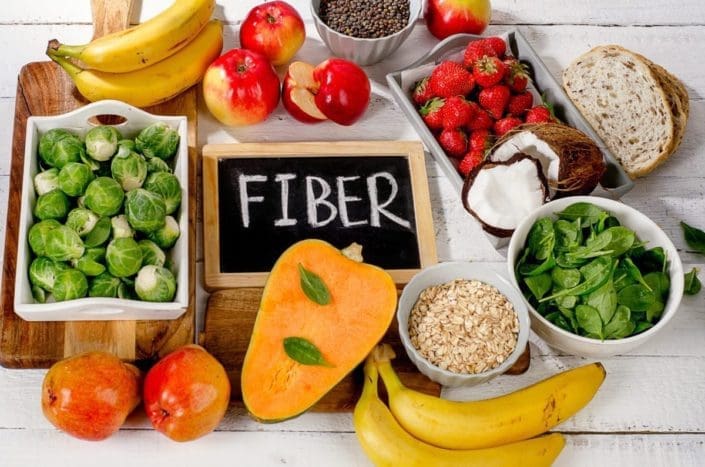
You have probably guessed that I am a BIG FAN of Myfitnesspal.com. By now you have learned to use it as a tool for tracking your calorie intake. But have you ever spent time studying the other columns of information in the food diary? I wish we had time to focus a challenge on each one of these important columns but this week we are going to focus on fiber. Take a look at your past entries. Have you met the fiber requirement each day? If you have HOORAH but if not you may have to make an extra effort this week.
Public health guidelines from the US Food and Drug Administration (FDA) advise Americans to eat between 20 and 30 grams of fiber a day, but most adults don't even eat half that much.
This isn't surprising, since fiber refers to the indigestible portion of plant foods, and in the largely refined standard American diet, healthful fibers are often processed right out.
Unless you regularly eat whole fruits and vegetables, nuts, and seeds, you may be missing out on the healthiest forms of fiber available – and that could be a problem.
Why Is Fiber So Important?
Soluble fiber, like that found in cucumbers, blueberries, beans, and nuts, dissolves into a gel-like texture, helping to slow down your digestion. This helps you to feel full longer and is one reason why fiber may help with weight control.
Insoluble fiber, found in foods like dark green leafy vegetables, green beans, celery, and carrots, does not dissolve at all and helps add bulk to your stool. This helps food to move through your digestive tract more quickly for healthy elimination. Many whole foods, especially fruits and vegetables, naturally contain both soluble and insoluble fiber.
9 Health Benefits of Fiber
There's no shortage of research showing how fiber may boost your health. Some of its top potential benefits include:
• Blood sugar control: Soluble fiber may help to slow your body's breakdown of carbohydrates and the absorption of sugar, helping with blood sugar control.
• Heart health: An inverse association has been found between fiber intake and heart attack, and research shows that those eating a high-fiber diet have a 40 percent lower risk of heart disease.1
• Stroke: Researchers have found that for every seven-grams more fiber you consume on a daily basis, your stroke risk is decreased by 7 percent.2
• Weight loss and management: Fiber supplements have been shown to enhance weight loss among obese people,3 likely because fiber increases feelings of fullness.
• Skin health: Fiber, particularly psyllium husk, may help move yeast and fungus out of your body, preventing them from being excreted through your skin where they could trigger acne or rashes.4
• Diverticulitis: Dietary fiber (especially insoluble) may reduce your risk of diverticulitis – an inflammation of polyps in your intestine – by 40 percent.5
• Hemorrhoids: A high-fiber diet may lower your risk of hemorrhoids.
• Irritable bowel syndrome (IBS): Fiber may provide some relief from IBS.
• Gallstones and kidney stones: A high-fiber diet may reduce the risk of gallstones and kidney stones, likely because of its ability to help regulate blood sugar.
• What Are the Healthiest Sources of Fiber?
Most Americans get nowhere near the amount of fiber needed to support a healthy body. As the New York Times reported: "...the current average fiber intake in the United States is about 13 grams a day for women and 17 for men. Increasing these amounts by seven grams a day would bring them close to the recommended levels of 21 to 25 grams for women and 30 to 38 for men. 'Seven grams a day increase is an achievable goal…' 'You're talking about... increasing vegetable and fruit by two portions a day.'"
As always I would prefer you fortify your fiber intake by focusing on whole foods (rather than processed bran or fiber supplements) which contain high levels of soluble and insoluble fiber.
• Berries
• Vegetables such as broccoli and Brussels sprouts
• Root vegetables and tubers, including onions and sweet potatoes
• Almonds
• Psyllium seed husk, flax, and chia seeds
• Green beans
• Cauliflower
• Beans
• Peas
So what is your challenge for the week?
1. Track your fiber on myfitnesspal.com daily and make sure you meet at least the minimum requirement listed there
2. At least once this week add a type of fiber into your diet that you don’t normally eat
ACCOMPLISH THESE TWO THINGS AND YOU HAVE MET THE FIBER CHALLENGE AND EARNED YOUR 35 BONUS POINTS FOR THE WEEK

No comments:
Post a Comment